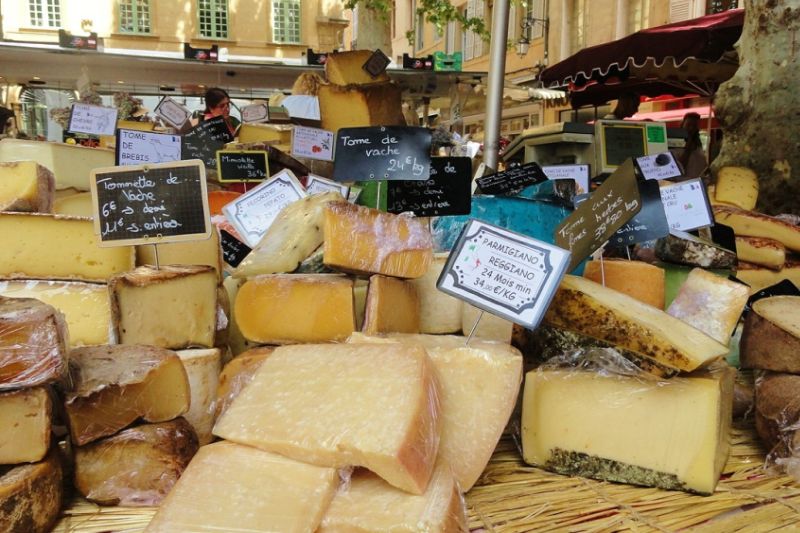On our luxury barge cruises, we take great pride in our cheese board selection. So much so, we offer a sample menu of what’s on offer in our brochures! With this in mind, we’re taking a look at a French classic: Roquefort.
What's On the Board: Roquefort Cheese

What is Roquefort?
It’s wonderful blue sheep’s milk cheese, produced in the Aveyron departement of southern France, which is rich, creamy and salty in flavour. It is served most often on our hotel barges on the Canal du Midi and is perfect with Muscat grapes, figs or walnuts.
Legend has it that Roquefort cheese was discovered when a young shepherd, eating his lunch of curds, saw a beautiful girl in the distance. Abandoning his meal in a nearby cave, he ran to meet her. When he failed to catch her, he returned to his now mouldy lunch and ate it out of pure hunger. Roquefort was also apparently a favourite of Emperor Charlemagne, hence in France it is called the ‘cheese of kings and popes’.

Roquefort: A History
In 1925, Roquefort was the first cheese to be granted the title of “Appellation d’Origine Contrôlée – AOC”, and is an international guarantee of Controlled Designation of Origin.
Roquefort cheese is made from the flavourful milk of ewes of the Lacaune breed produced throughout Aveyron and a single ewe produces enough milk for around 100 pounds of Roquefort each year. Traditionally the cheesemakers extracted ‘Penicillium Roqueforti’, the mould which gives the cheese its distinctive character, by leaving bread in the caves for six to eight weeks until it was consumed by the mould. The interior of the bread was then dried to produce a powder. Nowadays this mould is made by more sophisticated methods!

Once the ‘loaves’ of cheese have been made, they are put into a salting tub for 5 days before any excess salt is removed. Once this ‘pampering’ process is over, the loaves are pierced with needles some forty times from top to bottom, before being stored in the famous Roquefort cheese cellars to ripen slowly uncovered for 2 to 3 weeks on oak wood that helps capture the humidity.
When the cellar manager decides that the mould has developed sufficiently, the loaves are wrapped in tin foil and stored at a slightly higher temperature to further mature. Roquefort cheese will take up to nine months to reach maturity. Well worth the wait!
 English
English
 Spanish
Spanish French
French German
German Norwegian
Norwegian Portuguese
Portuguese Swedish
Swedish Italian
Italian Russian
Russian Simplified Chinese
Simplified Chinese Japanese
Japanese